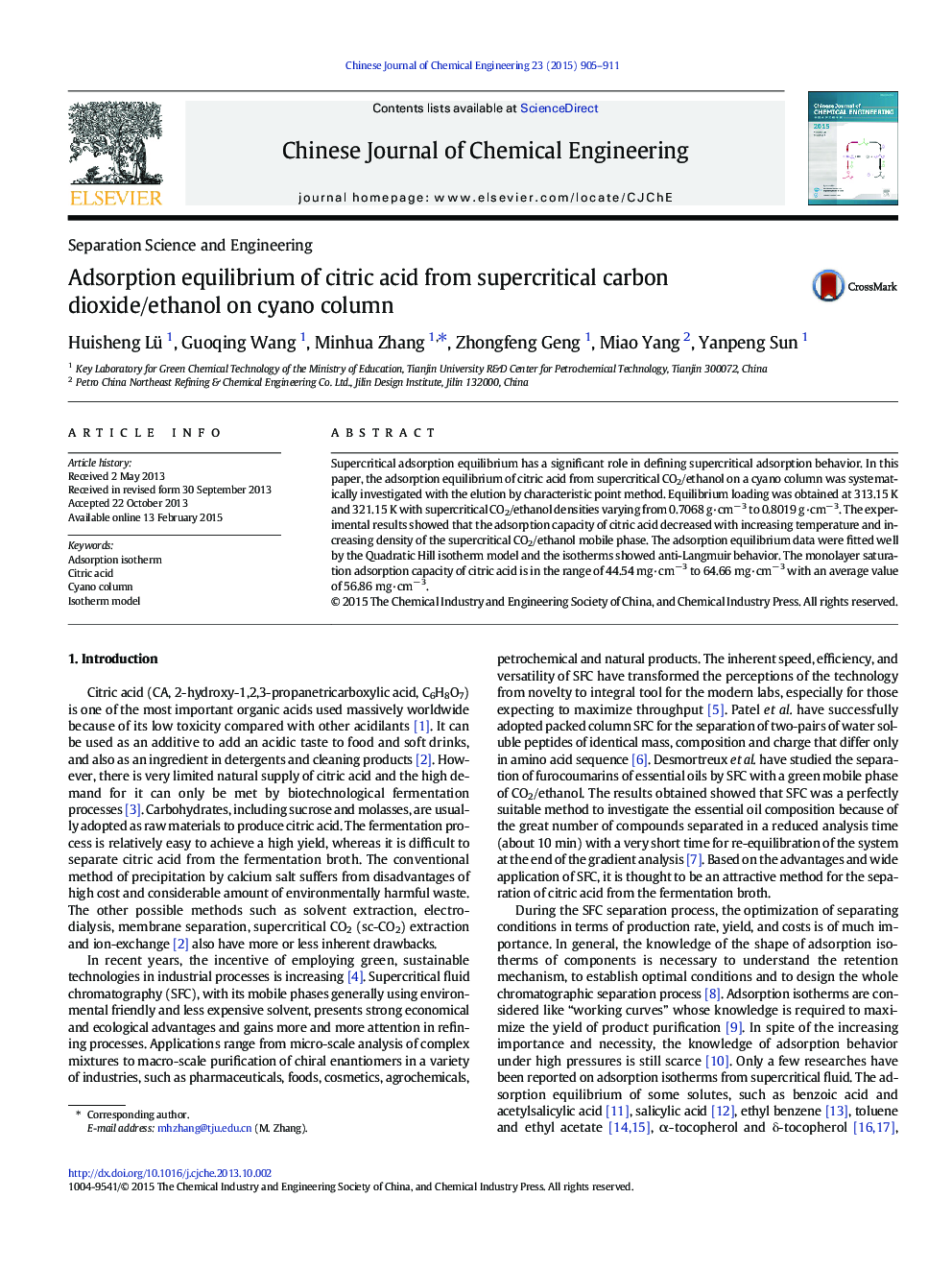| Article ID | Journal | Published Year | Pages | File Type |
|---|---|---|---|---|
| 165978 | Chinese Journal of Chemical Engineering | 2015 | 7 Pages |
Supercritical adsorption equilibrium has a significant role in defining supercritical adsorption behavior. In this paper, the adsorption equilibrium of citric acid from supercritical CO2/ethanol on a cyano column was systematically investigated with the elution by characteristic point method. Equilibrium loading was obtained at 313.15 K and 321.15 K with supercritical CO2/ethanol densities varying from 0.7068 g·cm− 3 to 0.8019 g·cm− 3. The experimental results showed that the adsorption capacity of citric acid decreased with increasing temperature and increasing density of the supercritical CO2/ethanol mobile phase. The adsorption equilibrium data were fitted well by the Quadratic Hill isotherm model and the isotherms showed anti-Langmuir behavior. The monolayer saturation adsorption capacity of citric acid is in the range of 44.54 mg·cm− 3 to 64.66 mg·cm− 3 with an average value of 56.86 mg·cm− 3.
Graphical abstractThe temperature and the density of the supercritical mobile phase are two important factors to influence adsorption capacity of citric acid from supercritical carbon dioxide/ethanol on a cyano column. The effect of temperature and density of the supercritical mobile phase on adsorption capacity is plotted in the above two figures, respectively. The adsorption capacity q decreases with increasing temperature at similar densities. This trend is conformed to the basic principle of thermodynamics that low temperature facilitates adsorption. At a fixed temperature, the adsorption capacity q of citric acid decreases with increasing density of the sc-CO2/ethanol mobile phase.Figure optionsDownload full-size imageDownload as PowerPoint slide
